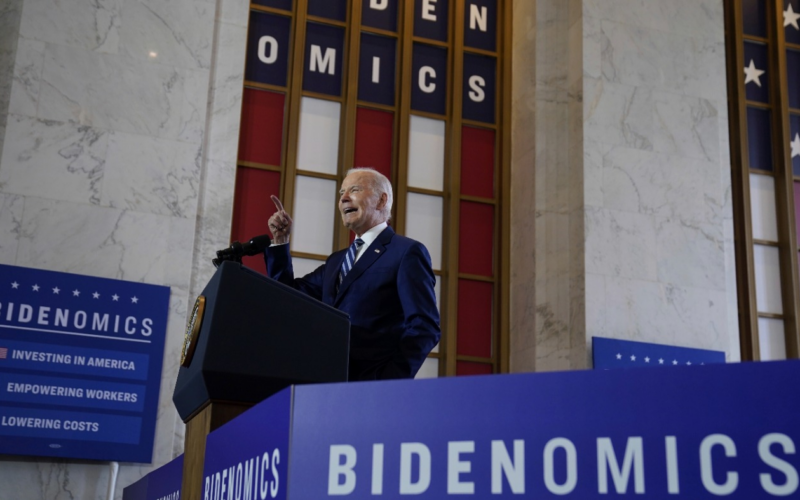Many on the left have praised President Joe Biden’s economic policies as historically progressive. However, a closer look reveals that while Bidenomics includes generous subsidies for favored business sectors, it has not significantly improved conditions for working people.
Since the beginning of Biden’s presidency, analysts have scrutinized his administration’s economic policies, debating whether they represent a departure from the established economic orthodoxy of previous decades. Bidenomics is characterized by substantial social welfare initiatives, significant federal investments in infrastructure and manufacturing, and appointees more willing to challenge big corporations on labor and antitrust issues. These elements suggest a White House more inclined to assert state involvement in investment decisions and less deferential to corporate power compared to past administrations.
Despite these differences, the question remains whether Bidenomics has effectively addressed major challenges such as climate change, economic inequality, and political disaffection. With the 2024 presidential election approaching, and Biden’s approval ratings on economic matters remaining low, it is essential to evaluate the accomplishments and limitations of his economic policies.
The Early Promise of Bidenomics
Early in Biden’s presidency, his economic agenda showed promise with the American Rescue Plan (ARP) of 2021, a $1.9 trillion package aimed at mitigating the economic impacts of the COVID-19 pandemic. The ARP included $1,400 stimulus checks, expanded unemployment insurance, and an extended child tax credit. While these measures temporarily alleviated economic hardships, most of the ARP’s provisions expired by the end of 2023.
Biden’s more ambitious Build Back Better (BBB) proposal, which aimed to make elements of the ARP permanent, was blocked by conservative Democratic Senator Joe Manchin. Nevertheless, parts of the BBB were incorporated into the Inflation Reduction Act (IRA) of 2022, which included $370 billion in climate spending. However, this was primarily through tax credits aimed at stimulating private investment in clean energy rather than direct social welfare provisions.
Mixed Results
The Biden administration has also pursued significant infrastructure investments through the Infrastructure and Jobs Act of 2021 and the CHIPS and Science Act of 2022, aimed at boosting domestic semiconductor manufacturing. Furthermore, Biden’s appointees to the National Labor Relations Board (NLRB) have taken a more labor-friendly stance, aiding new organizing efforts at companies like Amazon and Starbucks. The administration has also pursued aggressive antitrust enforcement against major corporations.
Despite these initiatives, the broader impact on working people’s living standards has been limited. Unemployment has fallen, and real wages have seen some recovery recently, but many households still struggle compared to pre-pandemic levels. The temporary nature of many welfare programs and the reliance on corporate subsidies have meant that economic gains have not been evenly distributed.
Structural Challenges
Bidenomics’ approach to industrial policy, which relies heavily on subsidies to incentivize private investment, has also faced criticism. The effectiveness of such policies in driving significant investment and ensuring beneficial outcomes for workers remains uncertain. For instance, many electric vehicle (EV) plants receiving subsidies are nonunion or offer less favorable terms than traditional auto plants, potentially undermining worker standards.
Additionally, despite progressive rhetoric and some policy shifts, overall union density has continued to decline, and major labor law reforms like the PRO Act have not been passed. The administration’s ability to enact more aggressive economic reforms has been constrained by political and structural limitations, including resistance from within the Democratic Party.
While Bidenomics represents a shift from the economic policies of past administrations, its impact on improving the conditions for working people has been modest. The administration’s efforts have been hampered by political constraints and the absence of a strong labor movement capable of pushing through more substantial reforms. As a result, Biden’s economic policies have largely favored capital over labor, highlighting the limitations of a liberal approach in the absence of broader structural changes and robust working-class advocacy.








